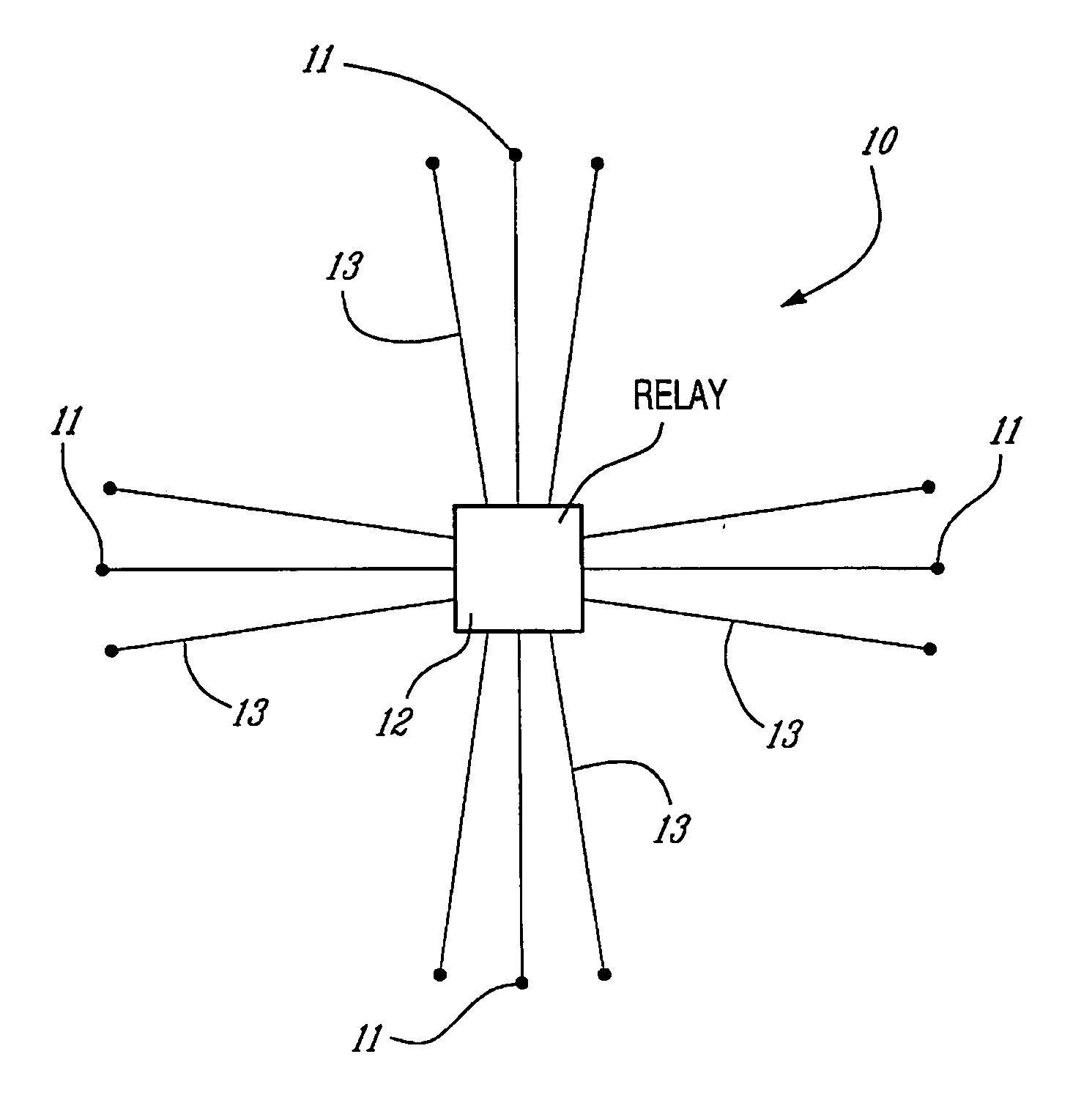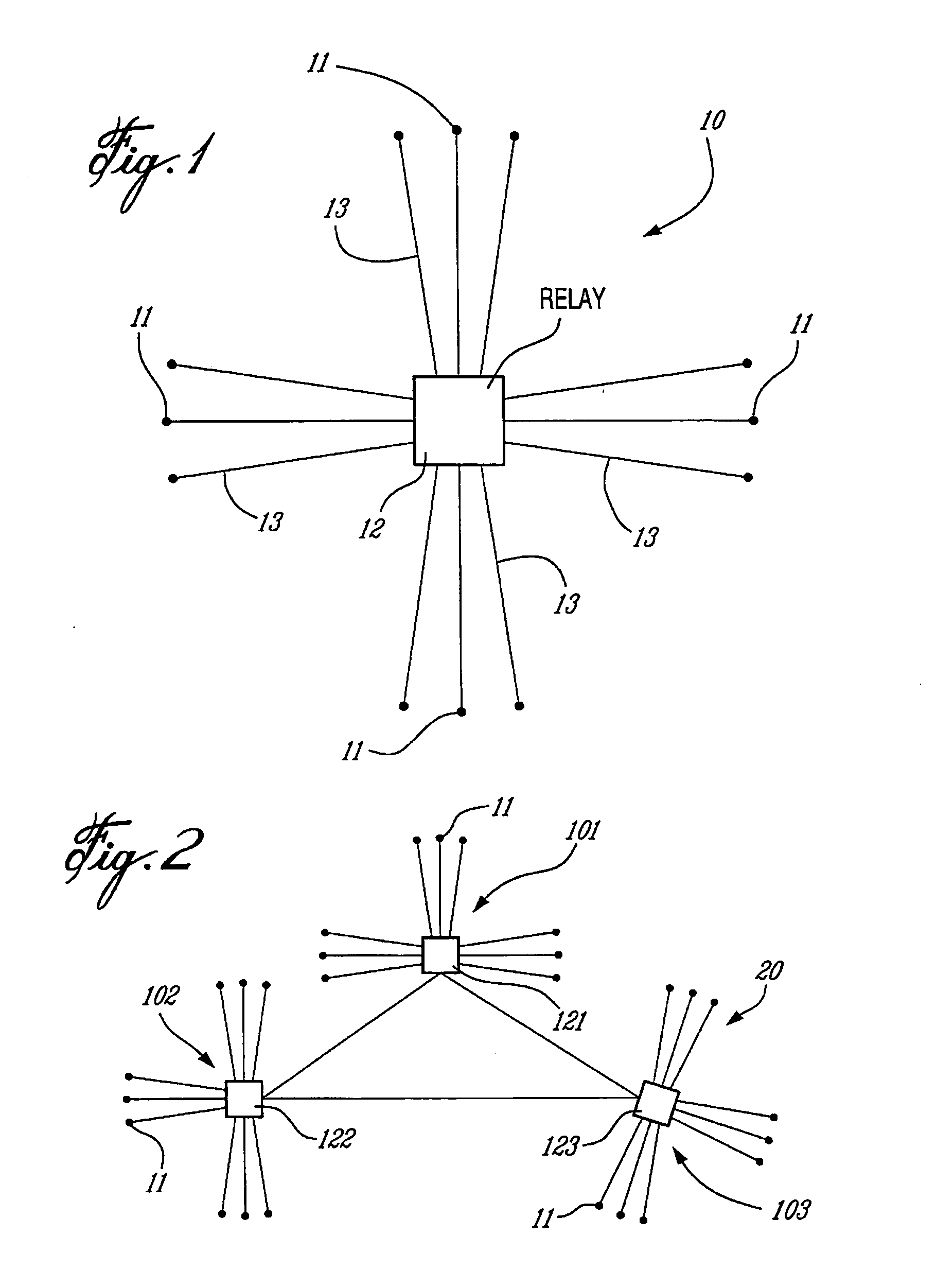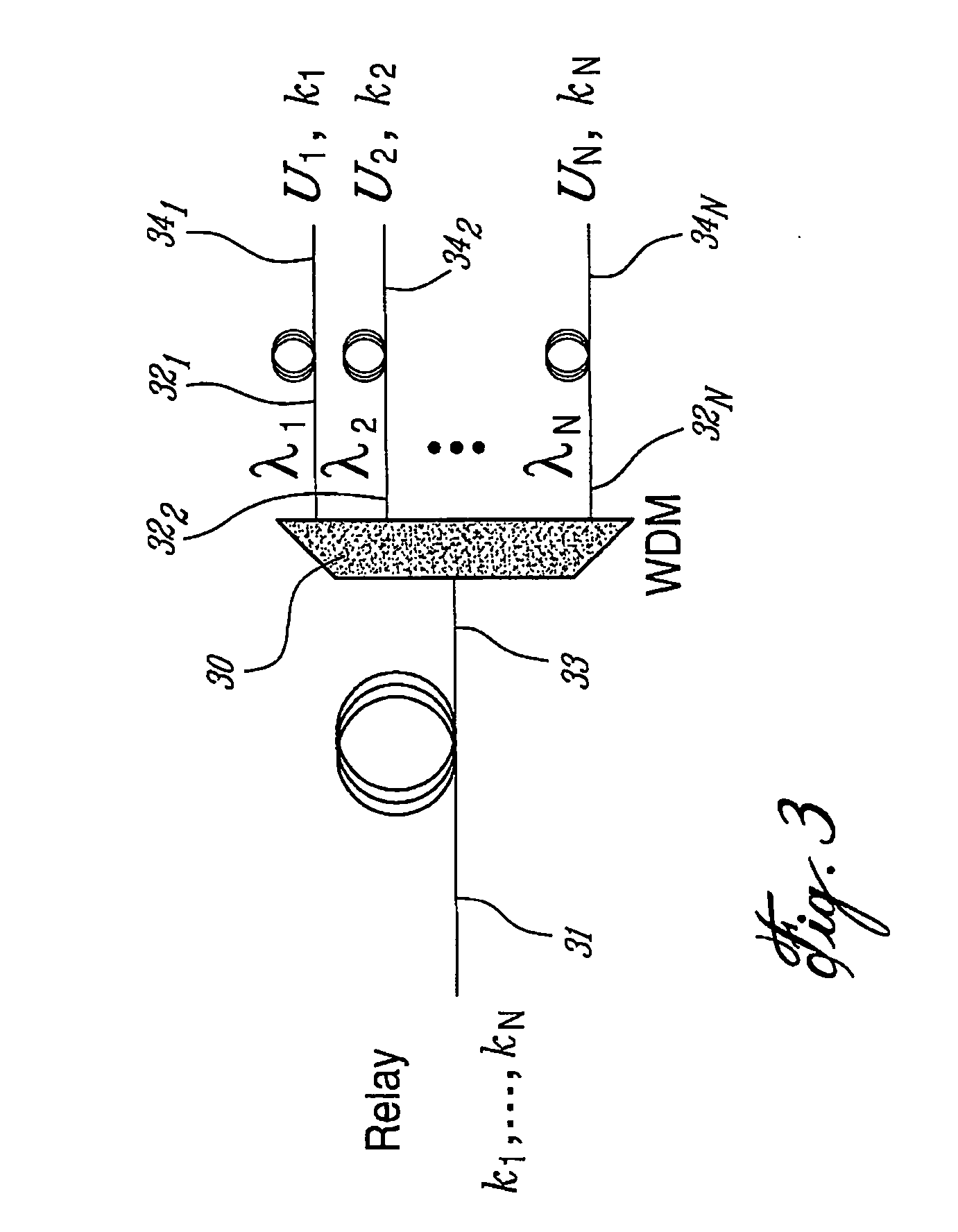Multi-user quantum cryptography method and system using wavelength division multiplexing
- Summary
- Abstract
- Description
- Claims
- Application Information
AI Technical Summary
Benefits of technology
Problems solved by technology
Method used
Image
Examples
Embodiment Construction
[0025]“Classical” cryptography is divided into two categories [1]. The first category, so-called private key cryptography, is unconditionally secure but it cannot be easily implanted on a large scale since it requires all the users to continuously renew their cryptographic keys to sustain confidential communications. By means of classical methods, it is unknown how to securely perform this task which, in returns, renders the sole usage of private-key cryptography completely unpractical. To be practical, private-key cryptography has to be combined with either quantum cryptography or with so-called public key cryptography, the second category of classical cryptography. However, this second category is not known to be unconditionally secure, which leaves us with no warranty of absolute secrecy in practical networks with classical cryptography only.
[0026] Generally stated, quantum cryptography is a technology capable of remotely generating an arbitrarily long and unconditionally secret...
PUM
 Login to View More
Login to View More Abstract
Description
Claims
Application Information
 Login to View More
Login to View More - R&D
- Intellectual Property
- Life Sciences
- Materials
- Tech Scout
- Unparalleled Data Quality
- Higher Quality Content
- 60% Fewer Hallucinations
Browse by: Latest US Patents, China's latest patents, Technical Efficacy Thesaurus, Application Domain, Technology Topic, Popular Technical Reports.
© 2025 PatSnap. All rights reserved.Legal|Privacy policy|Modern Slavery Act Transparency Statement|Sitemap|About US| Contact US: help@patsnap.com



